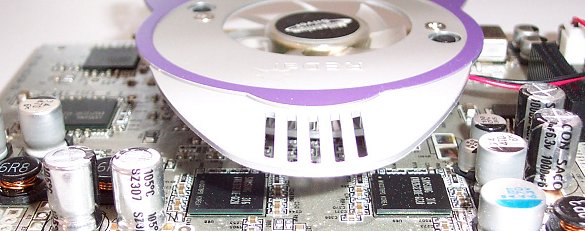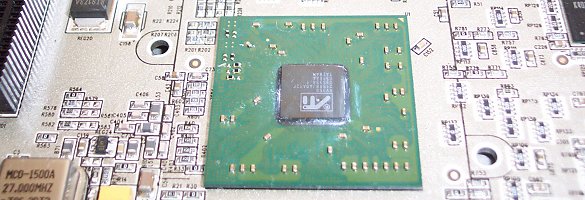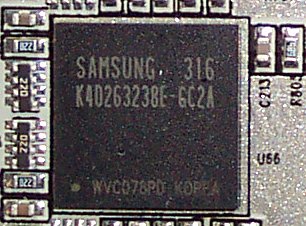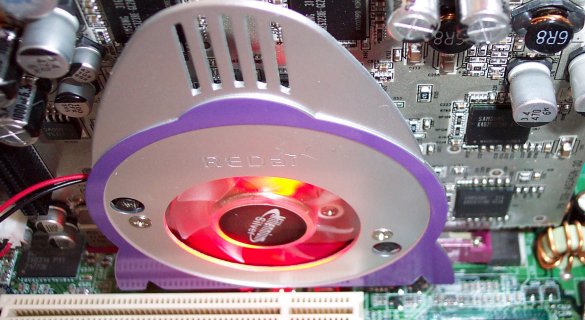Card appearance

The Triplex Radeon 9600 REDai 128MB, to give it its full title, isn't as extravagantly packaged as some recent cards. A simple white-ish box is smaller that most, too.

A funky silver-coated PCB and a cooler that belongs on the Starship Enterprise mark this card out from the generic, homogenous offerings we've been witness to recently. The 9600 Pro is built on a 0.13-micron manufacturing process and doesn't require an auxillary power connector found on the more power-hungry Radeons higher up in the range. Most casual observes would reckon that the silver PCB is just a nod towards pure looks, but Triplex maintain that silver is integral to achieving a low board temperature (it's a decent conductor, after all) and reducing EMI interference. The card did feel pretty cool when touching it under heavy GPU load. On the left-hand side of the cooler is Triplex's wireless TV-Out and VIVO interface. The TV-Out module is available separately, and also with an upgraded version of this card.

The cooler seems to be a concerted exercise in form over substance. As you can see from the above picture, the upper part of the cooler doesn't do very much at all. The actual cooling apparatus is a small ribbed aluminium cooler that's attached to the board via two pushpins. We feel as if a little more care is needed with the cooler's attachment to the PCB, because our sample's was free to move around with the minimum of force. Indeed, initial benchmarking was fraught with random lockups and reboots. The culprit, it transpired later, was the poorly applied cooler.

The RV350 in all its naked glory. Triplex had the care and attention to add a smidge of thermal paste between the VPU and cooler. Adding a thick lashing of Artic Silver 3 and re-attaching the cooler appeared to stabilise the card for benchmarking purposes.

Samsung DDR700MHz-rated chips find their way on to the Triplex REDai. These are exactly the same chips found on our Crucial Radeon 9800 Pro; a card that's vastly more expensive. 128MB of TinyBGA of 2.8ns chips is some specification for a midrange card. You'll not bee too shocked to learn that this is no standard 9600 Pro. The Triplex bumps up the VPU's speed from the standard 400MHz to a conservative 420MHz. Memory speeds, on the other hand, rise from the standard 600MHz to the 9800 Pro's 680MHz. That's not to say that this card has similar bandwidth and greater pixel-pushing power than ATi's flagship card, because the 9600 Pro uses half the rendering pipes (four vs. eight) and half the memory bus (128-bit vs. 256-bit) of the 9800 Pro. There are other technological differences that allow the premier card to function better than this midrange accelerator.

Nothing much to get excited about here. Triplex don't intend to launch a dual DVI version in the near future. If you were wondering where the title REDai name is derived from, wonder no longer.

It's red, it looks like an eye, and it resembles my eyes the morning after a heavy session on the intoxicating kind of juice.









